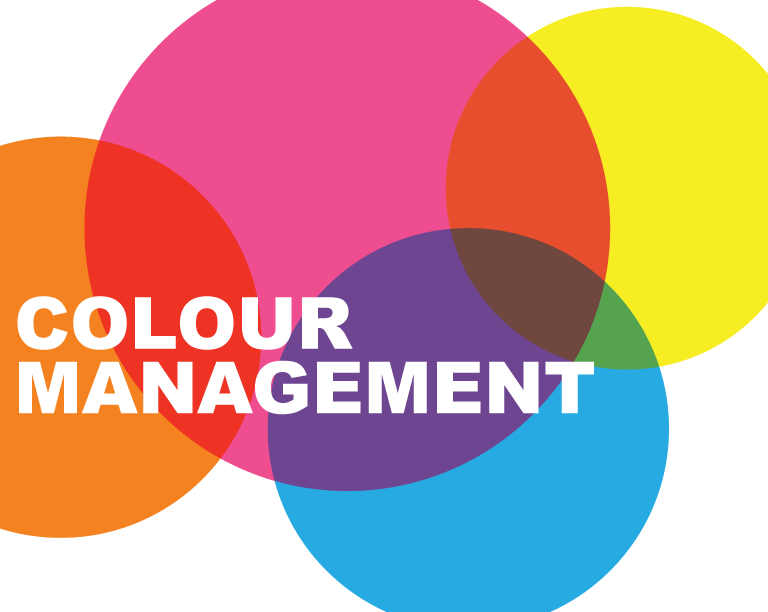Colour Management is one of those terms like health maintenance. Everyone has a vague idea of what it is and most admit it’s important, but few understand it.
Here are some of the issues:
1 – Human eyes can see more colours than can be reproduced by digital devices like scanners, cameras, monitors and printers. What you see as an original will not be the same as what the printer can reproduce. (Fun, interesting list of the top 10 animals with incredible eyesight, here. Another fascinating fact: Eskimos have been evolutionised to differentiate between up to 15 shades of white!)
2 – The colour gamut (range of colour) of all scanners, cameras, monitors and printers are different. The colour printed varies depends on the device that is producing it.
3 – As you move down the Artwork to Production line from input to screen display to final print, the colour gamut shrinks meaning that you naturally lose some colours.
4 – Monitors and printers see colour in completely contrasting ways; colours printed on paper and fabric look dull compared to their brighter and more energetic computer monitor counterparts.
So basically, the colours you see on your screen and what is created as the end product can be vastly different.
We at Expand a Sign have been printing banners worldwide, from the hot and dry Sahara to the freezing sub zero Winter temperatures of the Arctic (those eskimos were impressed). We are always aiming to achieve the same goal; providing consistent and accurate colours onto our fabric banners and branding.
The holy grail then behind managing colour is simple enough – WYSIWYP or What You See Is What You Print! Yes – the sky is blue and the grass is green, but is it the blue and the green that you intended? The skill of colour management is in the fine detail – those slight but oh so important variations of a colour that show depth, range and essentially make it pop.
Sometimes you are lucky. You buy a new ink jet printer, you hook it up, and your prints come out looking fantastic and continue to do so for the lifespan of that machine. But the reality is that an image can pass through many hands and be affected by many variables on its way to final output. These instabilities include digital cameras, scanners, image editing software (Photoshop, Illustrator etc.,), the natural lighting, monitors and printer software.
This is where Expand a Sign has become the industry leader in this field of colour, fabric and ink land mines. We have spent a lot of time, travel and effort to get to where we are today. We think that we are almost unmatched at achieving customer’s expectations in colour duplication. We have achieved a 99% colour accuracy and customer satisfaction of all jobs produced from Flying Banners , table cloths , inflatable bottles to umbrellas.
Expand a Sign.

